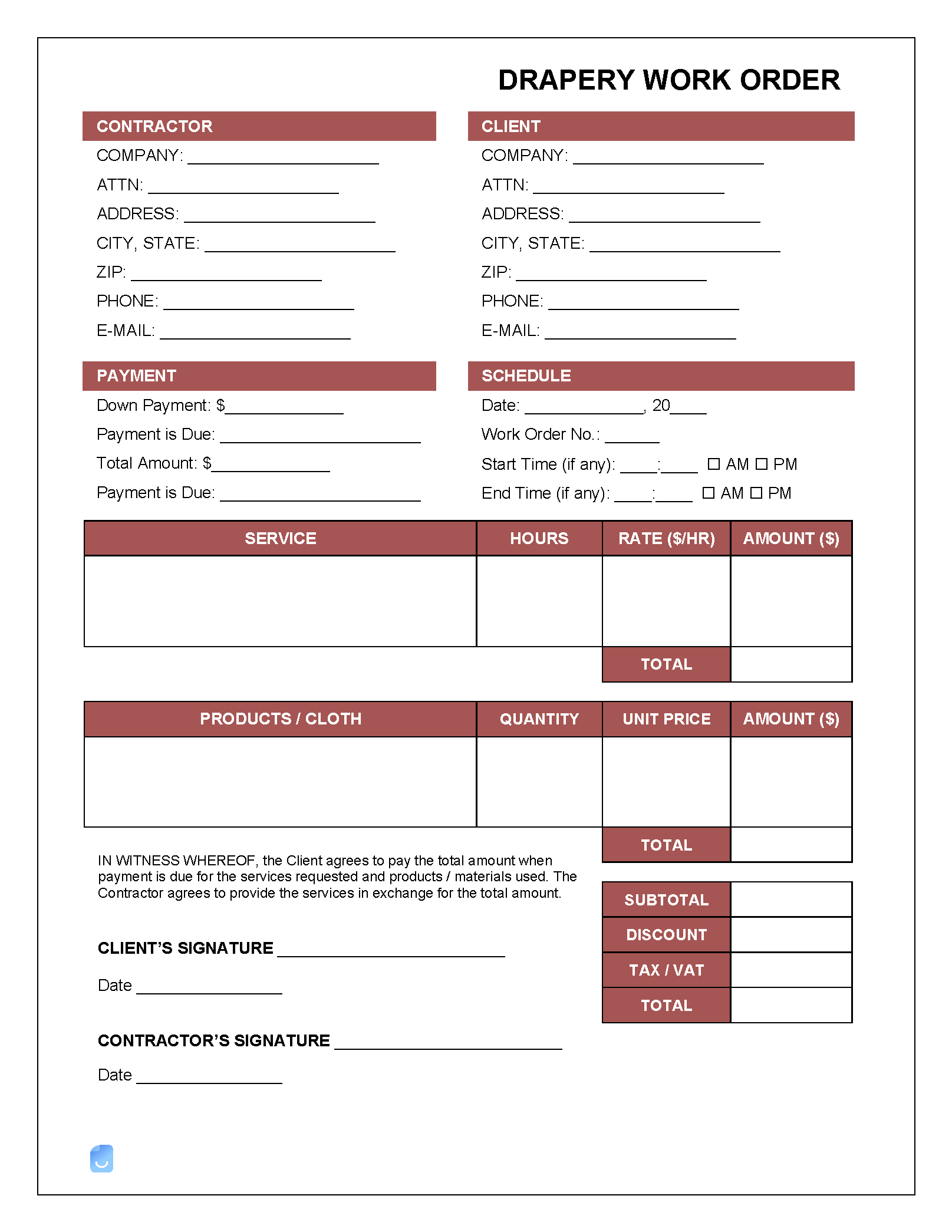What to Include in the Work Order
Being a more customizable, high-end type of fabric, it’s important that the maker of the curtains have a complete understanding of what the client is looking to have done. Instead of relying on phone calls, emails, or other types of communication, work orders standardize the process – ensuring customers give the exact specifications the drapery company is looking for. It is recommended that the company offers a catalog to customers either through the mail or online. This gives the customer a means of requesting exactly the type of fabric they are looking for through the use of identifying codes. To cover all bases, the work order should include:
- Company Info: Logo, address, phone number, website address (typically in the top-right corner)
- Customer Info: Name, address, phone number, email, date of order
- Drapery Type: Pinch pleat, ripple fold, tailored pleat, grommet, etc.
- Lining: If any; include the color, material, and other features
- Rod Info: Width and type
- Catalog Number: If applicable, this can remove the need to specify the drapery type, lining, and other features
- Length: Both the finished length and width
- Shipping Address: Only request if different than the customer’s contact information
- Payment Information: Address for sending checks, accepted cards, etc.
Draperies vs. Curtains
Although commonly referred to as “drapes,” (its verb form) the term “draperies” is used to describe a type of window covering that is found in homes as well as places with high-end vibes. While some may group curtains and draperies as one and the same, they have several distinctive features and uses, as described by the following: Draperies
- Made of heavier types of fabric
- Can be used to block light/cold air from entering a room
- Require cleaning by a professional (dry cleaning)
- Longer than standard curtains
Curtains
- Less formal (can be found essentially anywhere)
- Shorter (hang about the length of the window)
- Mainly for decorative purposes
- Cheaper
